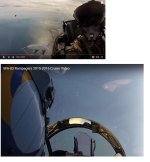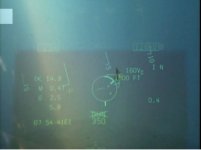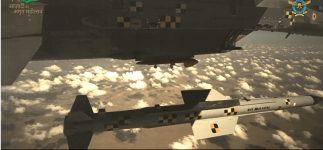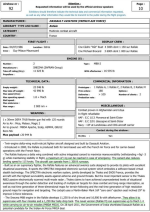$1,508,300,000 for three earmarks for the F-35 JSF, the fifth-most ever earmarked for the program. The bulk of the FY 2023 earmarks fund the acquisition of 18 aircraft beyond the amount requested by the DOD, including 11 for the Air Force and seven for the Navy.
A small ocean of ink has been spilled cataloging the many troubles of the JSF. It has been under continuous development since the contract was awarded in 2001 and has faced innumerable delays and cost overruns. Total acquisition costs now exceed $428 billion, nearly double the initial estimate of $233 billion, with projected lifetime operations and maintenance costs of $1.727 trillion.
On April 26, 2016, then-Senate Armed Services Committee Chairman John McCain (R-Ariz.) called the JSF program “both a scandal and a tragedy with respect to cost, schedule, and performance.” In February 2014, then-Under Secretary of Defense for Acquisition, Technology, and Logistics Frank Kendall referred to the purchase of the F-35 as “acquisition malpractice,” a description that has yet to be improved upon.
The JSF has been plagued by a staggering array of persistent issues, many of which were highlighted in the FY 2019 DOD Operational Test and Evaluation Annual Report, which revealed 873 unresolved deficiencies including 13 Category 1 items, involving the most serious flaws that could endanger crew and aircraft. While this is an overall reduction from the 917 unresolved deficiencies and 15 Category 1 items found in September 2018, the report stated that “although the program is working to fix deficiencies, new discoveries are still being made, resulting in only a minor decrease in the overall number of deficiencies.”
Cost overruns resulting from the ongoing problems have plagued the F-35. The first comprehensive cost review of the program since 2012 found a funding gap of $10 billion over the next five years. On September 11, 2020, Bloomberg reported on an internal DOD review of the JSF program labeled “For Official Use Only.” Dated June 17, 2020, the report estimated that $88 billion for research and development, procurement, and operations and maintenance would be needed over the next five fiscal years. The DOD has officially called for $78 billion for these purposes.
According to the DOD report, much uncertainty exists regarding the final cost of the JSF because the aircraft has only logged about 2 percent of the total flight hours it will accrue over its lifecycle. In addition, the DOD’s goal to reduce the F-35’s cost per hour of flight by $10,000 to $25,000 over the next five years “is likely to prove unachievable” because of “a lack of defined actions” to cut costs.
Many of the problems with the F-35 program can be traced to the decision to develop and procure the aircraft simultaneously. Whenever problems have been identified, contractors needed to go back and make changes to planes that were already assembled, adding to overall costs. Speaking at the Aspen Security Forum on July 24, 2015, then-Air Force Secretary Deborah Lee James stated, “The biggest lesson I have learned from the F-35 is never again should we be flying an aircraft while we’re building it.”
The high cost, delays, and underperformance of the JSF has also created a readiness gap, which has forced the Air Force to purchase older aircraft as a stopgap. The average Air Force fighter is approximately 28 years old. The service’s fleet of F-16s, one of the aircraft meant to be replaced by the F-35, is on average more than 30 years old.
Unsurprisingly, the Air Force’s readiness rates have plummeted in recent years. Aware of the problem, former DOD Secretary Jim Mattis released a memo in September 2018 directing the Air Force and Navy to increase mission-capable rates of four aircraft (including three Air Force platforms) to at least 80 percent by the close of 2019. The initiative failed and was quickly abandoned by the DOD. The Air Force’s rates have languished in the low 70s in the last four years, including 71.5 percent in 2021.
Unbelievably, the F-35A, the Air Force’s version of the JSF, has sustained an even lower readiness rate than older service platforms. In 2021, 68.8 percent of F-35As were mission-capable on average, down from 76.1 percent in 2020, but still better than the 61.6 readiness rate in 2019.
Of course, the program’s many problems have not stopped the Pentagon from asking for funding, and members of Congress from supplying it, oftentimes exceeding the request from the DOD. This trend continued in FY 2023, when legislators added $1.5 billion to fund the acquisition of 18 JSFs beyond the amount requested by the Pentagon. Upon completion of the development phase, additional funding will be needed to retrofit the JSFs purchased via earmarks, adding to overall program costs.
The wide distribution of F-35 supply lines across the country is no accident. According to a map showing the local economic impact of the JSF on Lockheed Martin’s website, the only states that do not have at least one supplier for the aircraft are Hawaii and North Dakota. This gives all but two representatives and four senators more than enough incentive to keep greasing the wheels.
The deficiencies that have plagued the DOD in recent years have been identified ad nauseum. The Pentagon’s track record in addressing its financial shortcomings and procurement failures makes it evident that these problems will continue until members of Congress hold the DOD to a much higher standard of effectiveness and efficiency. Since FY 2001, legislators have added 37 earmarks for the JSF program, costing $12.1 billion.















